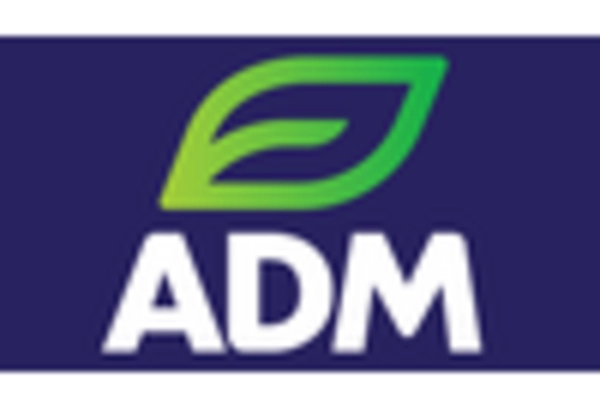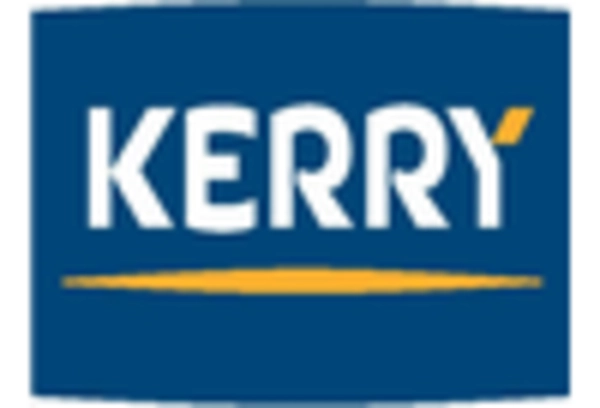The Drum to Hopper Blends Premix Market is currently characterized by a dynamic competitive landscape, driven by increasing demand for customized solutions in food and beverage applications. Key players such as BASF SE (Germany), Cargill, Incorporated (US), and DuPont de Nemours, Inc. (US) are actively shaping the market through strategic initiatives focused on innovation and sustainability. BASF SE (Germany) emphasizes its commitment to developing environmentally friendly products, while Cargill, Incorporated (US) leverages its extensive supply chain to enhance product availability and customer service. DuPont de Nemours, Inc. (US) is concentrating on digital transformation to streamline operations and improve customer engagement, collectively fostering a competitive environment that prioritizes adaptability and responsiveness to market needs.
In terms of business tactics, companies are increasingly localizing manufacturing to reduce lead times and enhance supply chain efficiency. The market structure appears moderately fragmented, with several players vying for market share, yet the influence of major companies remains substantial. This competitive structure allows for a diverse range of product offerings, catering to various consumer preferences and regional demands, while also encouraging innovation as companies strive to differentiate themselves.
In August 2025, Cargill, Incorporated (US) announced a strategic partnership with a leading technology firm to enhance its digital capabilities in the Drum to Hopper Blends Premix Market. This collaboration aims to integrate advanced analytics and AI into their supply chain processes, potentially improving operational efficiency and customer insights. Such a move underscores Cargill's commitment to leveraging technology to meet evolving consumer demands and optimize its market position.
In September 2025, DuPont de Nemours, Inc. (US) launched a new line of sustainable premix solutions designed to reduce environmental impact while maintaining product quality. This initiative reflects DuPont's strategic focus on sustainability, aligning with global trends towards eco-friendly products. The introduction of these solutions may not only enhance DuPont's product portfolio but also strengthen its competitive edge in a market increasingly driven by sustainability concerns.
In October 2025, BASF SE (Germany) unveiled a new manufacturing facility dedicated to producing innovative premix solutions tailored for the Asian market. This expansion is indicative of BASF's strategy to capitalize on regional growth opportunities and enhance its operational footprint. By establishing a local presence, BASF aims to better serve its customers and respond swiftly to market demands, thereby reinforcing its competitive position in the global landscape.
As of October 2025, the Drum to Hopper Blends Premix Market is witnessing significant trends such as digitalization, sustainability, and the integration of AI technologies. Strategic alliances are increasingly shaping the competitive landscape, enabling companies to pool resources and expertise to drive innovation. Looking ahead, it appears that competitive differentiation will evolve from traditional price-based competition to a focus on technological advancements, sustainable practices, and reliable supply chains, suggesting a transformative shift in how companies engage with the market.

















Leave a Comment